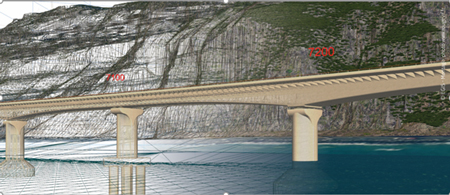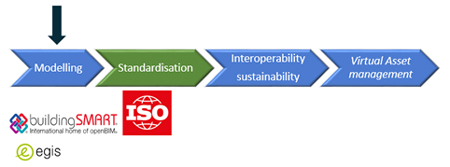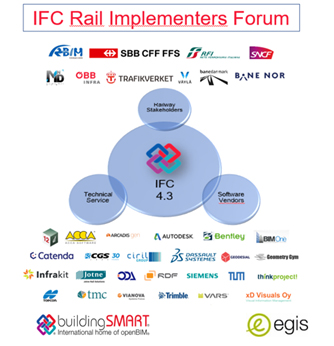THANK YOU FOR SUBSCRIBING

Christophe Castaing, Director Digital Engineering, Egis
Egis is a french engineering company The € 1 , 5 Billions of turnover includes € 650 millions in design and in supervision of works during the construction phase. In 2020, the turnover related to BIM is close to 270 millions of euros, representing 80 % of the design activities. From 2018 to 2020, the progress is around 80%. In 2020, Egis becomes a real international bim company with 70% of the turnover related to international projects outside France. Egis is very much involved in the development of the Open BIM, as a member of the BuildingSmart international (bSI) board and creating within BSi the process to extend the IFC domain to all domains of public works such as linear infrastructure ( roads and rail) including bridges, tunnels and geotechnics. Starting in 2011, IFC for infrastructure is now under implementation with international software vendors
Egis manages these two BIM aspects together; modelling and collaborative processes. The perspective to move the egis process of delivery under bim is combined with the original perspective of BIM level 3 such as defined in the British Standard Pass 1102. Initially, Bim level 3 means : information and data shared under International standard for describing construction and environment, and collaborative processes for validation and publishing.

Egis has participated in the validation process of ISO 19650 in the ISO TC59 and in the same time, has developed its corporate BIM toolkit for implementing the International standard. In 2019, 80 % of the BIM processes produced by EGIS are BIM level 2 or higher. In 2019, as a member of the ICOS consortium in charge of designing the HPC project in UK, Egis received the bSI awards attributed at the technical summit in Beijing for delivering open bim models for the construction phase.. For this project, the Employer requires IFC as the mandatory deliverable as declashed models ready to apply for the construction. The contractor was using the IFC models for supplying and monitoring materials. All the models delivery is based on a common data environment ( CDE) approach ( ref to ISO 19650).
The Egis open BIM policy is oriented for a long term perspective :
Thirty years ago, Egis had developed a CAD system for large linear infrastructure projects. In the same time, Egis had started some research on the needs of collaborative processes for increasing quality and productivity. In 2020, these two issues can be considered as solved with IFC 4.3, including IFC bridge, IFC tunnel, IFC rail, etc… and with ISO 19650 for the process standardisation.
The PLM concept coming from the Manufacturing industries can be considered as mature in the construction industry with these two developments :OpenBIM and ISO 19650. for the next ten years, this bim approach will be oriented in a double perspective : developing a strategy for providing a digital twin as the tool for monitoring the low carbon strategy in the construction life cycle. It means : Open Bim and Open GIS for a low carbon strategy.

The built environment , covering built, underground and environmental topics represents not less than 30% of the carbon impact. Openbim is considered by Egis as the preferred option for managing this construction industry transformation, according to the following aspects : for the construction or the reconstruction of any buildings, the digital twin would be the way to simulate during the full lifecycle ( design or re-design, construction and operation) its carbon impact. With the federation of Bim and Gis models, the designer and the contractor will be able to identify indicators ( KPI) for verifying at any delivery steps, the environmental performance.

-
Egis Has Participated In The Validation Process Of ISO 19650 In The ISO TC59 And In The Same Time, Has Developed Its Corporate BIM Toolkit For Implementing The International Standard
With the development of OPenbim ( incl OpenGis) a new generation of BIM models are arriving for the Facility managers. The IFC 4 extension , will combine a full object model, with complex geometries, with all the semantics defined by the construction domain experts, and modification management, object by object, rather than file by file. The present implementation process in bSI, with the software vendors, is proving the capability of this option in a very short term. This toolkit can be considered as the master piece for the digital twin of territories.













